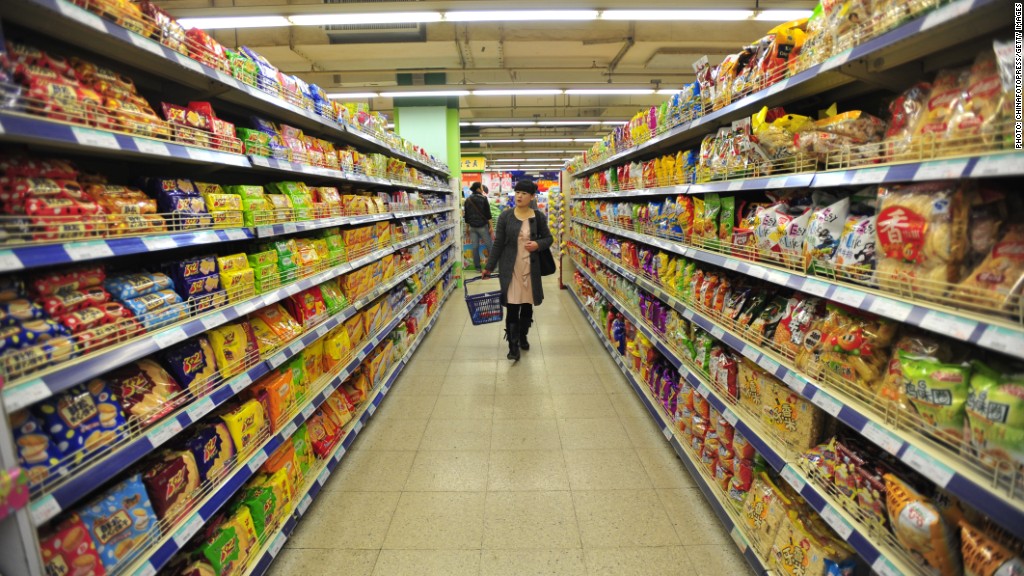
Higher food prices brought on by a bone-chilling spurt of cold weather pushed China's consumer price index higher in December.
Chinese consumers paid 2.5% more for goods and services in December than they did a year ago, the government's National Bureau of Statistics reported Friday.
While that's up from a 2% annual increase in November, it nevertheless represents tame inflation for the world's second largest economy. A year ago, the country was experiencing an annual inflation rate of 4% or higher.
Price hikes were the most dramatic for food. Food prices rose 4.2% year-over-year -- while fresh vegetables rose the most. Some of that increase is likely attributable to chilly temperatures in much of China, which is experiencing its coldest winter in a quarter century.
Food is an important gauge of cost of living expenses in China. It accounts for more than a third of the country's inflation calculation, and for rural families, it makes up the bulk of expenses.
Related: China's top 10 brands
The Chinese government prefers to keep its annual inflation rate below 4% -- a level it sees as consistent with healthy economic growth and consumer demand.
China is unlikely to return to the days of 10% economic growth per year but may be reaching a new normal of growth. China's economy grew 7.4% in the third quarter, compared to a year earlier. The government is slated to release fourth quarter figures next week.


